Abstract Art: the Visual Language of Emotion
For hundreds of years, realism dominated the European art world, from religious paintings to landscapes to commissioned portraits of upper-class men and women. So how did abstract art evolve so quickly, from its first roots in impressionism in the mid 19th century to the explosion of abstract expressionism that gained notoriety and popularity in the mid 20th century?
Many art historians will talk about artists’ frustration with the confines of realist styles and the demand that an artist should try to create an exact likeness of an object or person. Others will talk about the horror and disillusionment caused by the first and second world wars, and the dissatisfaction artists felt with more traditional forms of artistic expression, which led to Dadaism and other radical art forms. Both are good explanations.
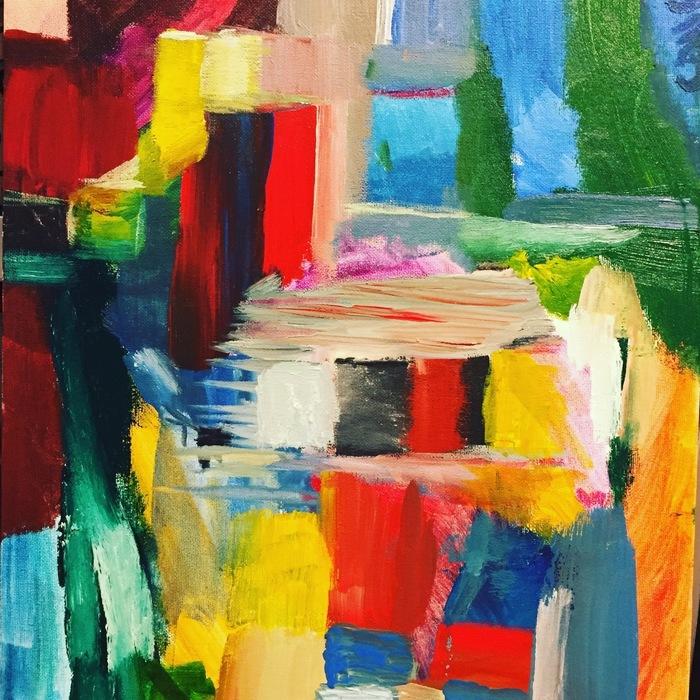 Abstract expressionist work, Bed of Multi-Coloured Dreams by Michael Cougan
Abstract expressionist work, Bed of Multi-Coloured Dreams by Michael Cougan
In the 20th century in particular, though, many artists were also thinking deeply about how to represent their own minds. They were playing with the idea that there is no such thing as objective representation, and that the mind, feelings, beliefs, moods and attitudes of the artist influenced and distorted even the most faithfully rendered depiction of people, landscapes, objects and moments in time.
Contemporary anthropologists recognise this lack of objectivity. Academics who enter the jungle to study isolated tribes who’ve had no contact with the outside world know that no matter how careful they are not to affect the culture, the knowledge that there are different kinds of people out there will alter the tribe’s understanding of the world. The observer changes the observed.
So it is with art: no matter how faithfully an artist attempts to mimic what he or she sees, the observer changes the observed. Ceci n’est pas une pipe, Rene Magritte scrawled at the bottom of his painting of a smoking pipe in The Treachery of Images. This is not a pipe.
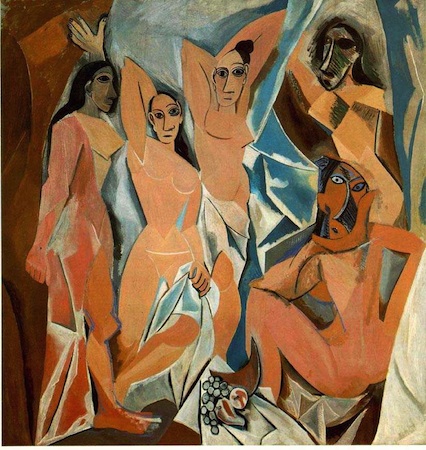 Cubists like Picasso explored partial abstraction by trying to portray the subject in all its dimensions and points of view at one. Pictured is Picasso’s Les Demoiselles D’Avignon, painted in 1907. Source: Khan Academy
Cubists like Picasso explored partial abstraction by trying to portray the subject in all its dimensions and points of view at one. Pictured is Picasso’s Les Demoiselles D’Avignon, painted in 1907. Source: Khan Academy
In part, abstract art grew out of this understanding. Beginning with impressionism, which distorted the representation of a landscape or people through small, dotted brushstrokes to give a sense of immediacy, atmosphere and emotion, abstraction came into its own with the cubists, who attempted to explore their subject from many different angles. Finally, abstract expressionism arrived when the paint on the canvas lost its subject entirely and became something closer to a pure representation of the mind of the artist and the moment of the art’s creation.
What better way to represent the mush and madness of the mind than with quick, mad splatters and howling colours?
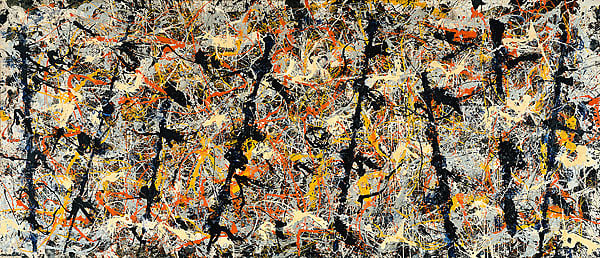 The height of abstract expressionism: Jackson Pollock’s world famous Number 11, 1952, also known as Blue Poles. Source: National Gallery of Australia
The height of abstract expressionism: Jackson Pollock’s world famous Number 11, 1952, also known as Blue Poles. Source: National Gallery of Australia
Some artists come to abstraction because it is faster to create a whirling mass of colour on the canvas than it is to suffer through the slow grind of perfecting each detail on a realist, surrealist or hyperrealist piece, but that isn’t to cast shade on the skills of abstract artists. Stand up close to Jackson Pollock’s Number 11, 1952, more commonly known as Blue Poles, in the National Gallery in Canberra and you’ll feel the imposing rawness within it – there’s no arguing against the emotional effect that abstract work can have on both the artist and the spectator.
Of course, not all abstract art comes out of Western art traditions. Australian Aboriginal art comes from a long cultural and artistic tradition that has evolved into an instantly recognisable style that has direct links to country and culture. While many contemporary Indigenous artists diverge in style and subject matter, plenty of artists continue to use traditional techniques and styles to represent the world in its physical and spiritual forms.
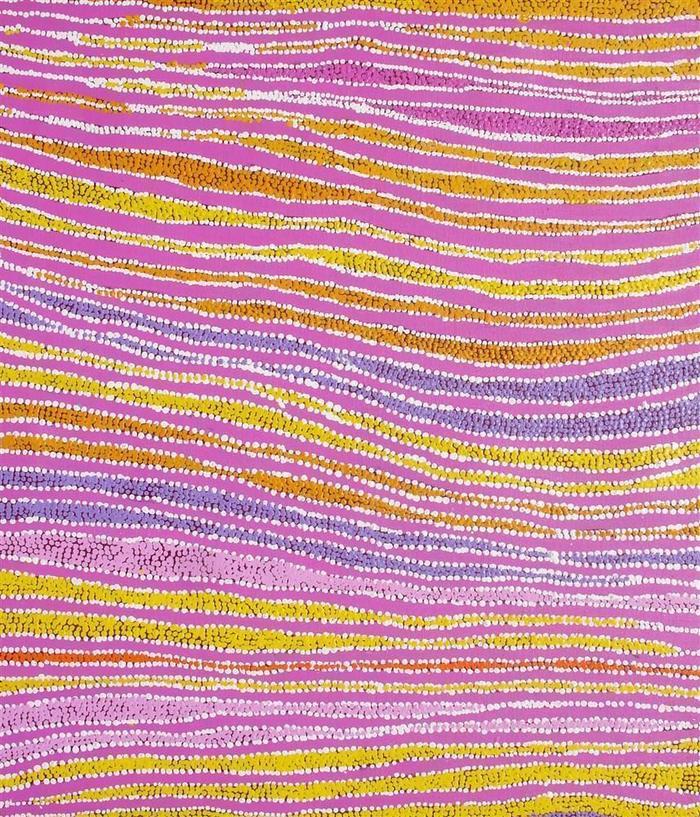 Wakirlpirri Jukurrpa (Dogwood Tree Dreaming) by Liddy Napanangka Walker represents the dogwood tree that grows along riverbanks, painted in traditional style using contemporary acrylic colours. This method is distinct from abstract expressionism because the image is still a representation of an object (in this case a landscape), as opposed to full abstraction that only aims to represent the action of making art and the mind of the artist.
Wakirlpirri Jukurrpa (Dogwood Tree Dreaming) by Liddy Napanangka Walker represents the dogwood tree that grows along riverbanks, painted in traditional style using contemporary acrylic colours. This method is distinct from abstract expressionism because the image is still a representation of an object (in this case a landscape), as opposed to full abstraction that only aims to represent the action of making art and the mind of the artist.
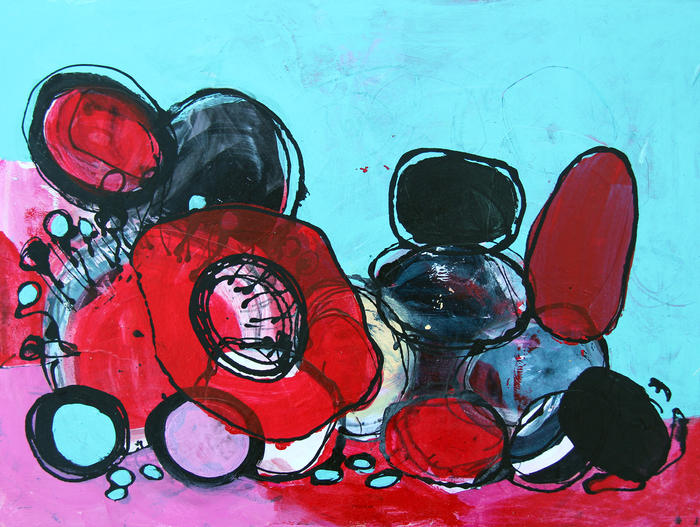 Abstract paintings may be semi-figurative or tell a story. These paintings are often referred to as partial abstraction – where there is still a discernible subject of the painting that has been abstracted in order to express its essence or emotional core, or perhaps to represent all the dimensions of the object at once, as in Picasso-style cubism. Outback Boulders by Wendy Eriksson is an example of partial abstraction, because the paint on the canvas is an abstracted representation of boulders in the outback.
Abstract paintings may be semi-figurative or tell a story. These paintings are often referred to as partial abstraction – where there is still a discernible subject of the painting that has been abstracted in order to express its essence or emotional core, or perhaps to represent all the dimensions of the object at once, as in Picasso-style cubism. Outback Boulders by Wendy Eriksson is an example of partial abstraction, because the paint on the canvas is an abstracted representation of boulders in the outback.
Realism never died out, of course, and evolved in its own interesting ways into surrealism, photorealism and hyperrealism, and most school-taught artists still learn the techniques of realism before branching out into whatever style of art they are compelled to make.
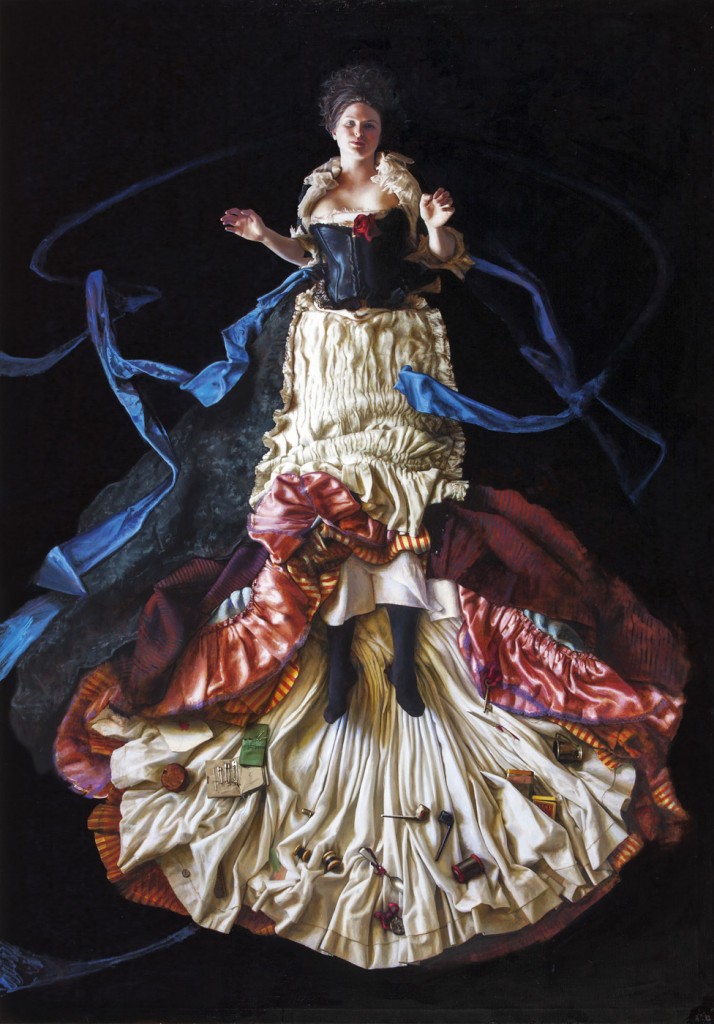 Abstract techniques were in part a reaction to what some artists felt were the restrictive confines of realist representation. Contemporary realist and surrealist artists like Anna Platten are somewhat freed from those confines, as they can use realist and surrealist techniques to capture dream-like states of mind, such as in this enormous painting finished with painstaking, almost hyperreal detail, entitled Flower – Dedicated to Mark Conway Walter. Source: Hill Smith Gallery
Abstract techniques were in part a reaction to what some artists felt were the restrictive confines of realist representation. Contemporary realist and surrealist artists like Anna Platten are somewhat freed from those confines, as they can use realist and surrealist techniques to capture dream-like states of mind, such as in this enormous painting finished with painstaking, almost hyperreal detail, entitled Flower – Dedicated to Mark Conway Walter. Source: Hill Smith Gallery
The abstract art movement, however, is stronger than ever and is particularly suited to the art collector who wants to have a pure emotional connection with a work. Below are just a few examples of partially abstract and abstract expressionist works available on bluethumb at the moment.
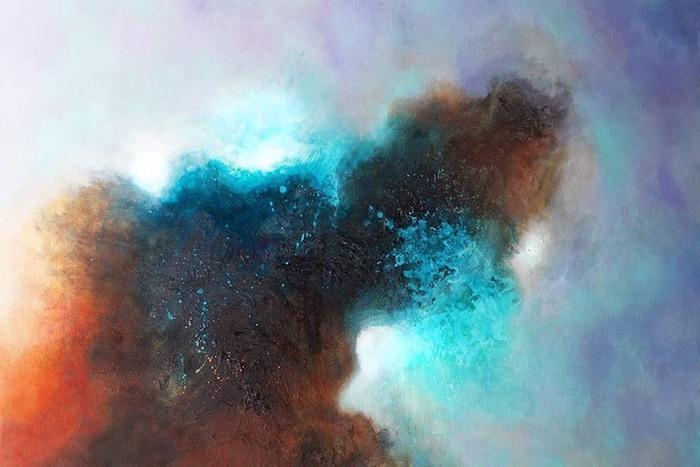 The Glow Beyond II by John Louis Lloyd, an abstracted astral landscape.
The Glow Beyond II by John Louis Lloyd, an abstracted astral landscape.
 John Graham’s Summer (Abstracted Landscape) is a contemporary example of partial abstraction. Many bluethumb artists use partial abstraction to beautiful effect in their landscapes.
John Graham’s Summer (Abstracted Landscape) is a contemporary example of partial abstraction. Many bluethumb artists use partial abstraction to beautiful effect in their landscapes.
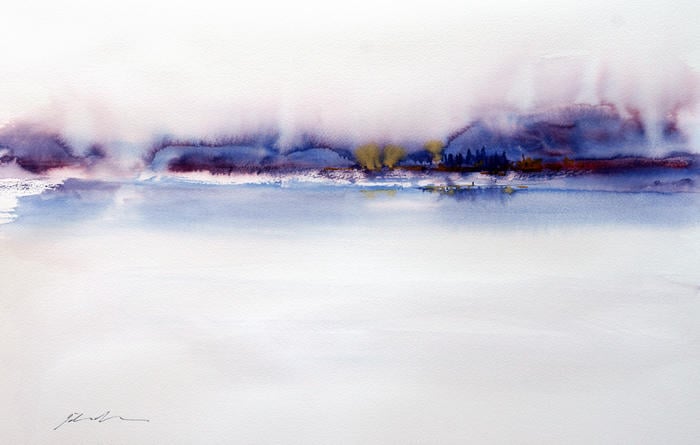 Jill Bryant’s abstracted watercolour landscape 3 Yellow Bushes uses colour and shape to capture spontaneous moments of fleeting beauty, with an atmosphere of nostalgic longing that bleeds out from a strong horizon line.
Jill Bryant’s abstracted watercolour landscape 3 Yellow Bushes uses colour and shape to capture spontaneous moments of fleeting beauty, with an atmosphere of nostalgic longing that bleeds out from a strong horizon line.
 Animal Instincts by Sacha Beverly
Animal Instincts by Sacha Beverly
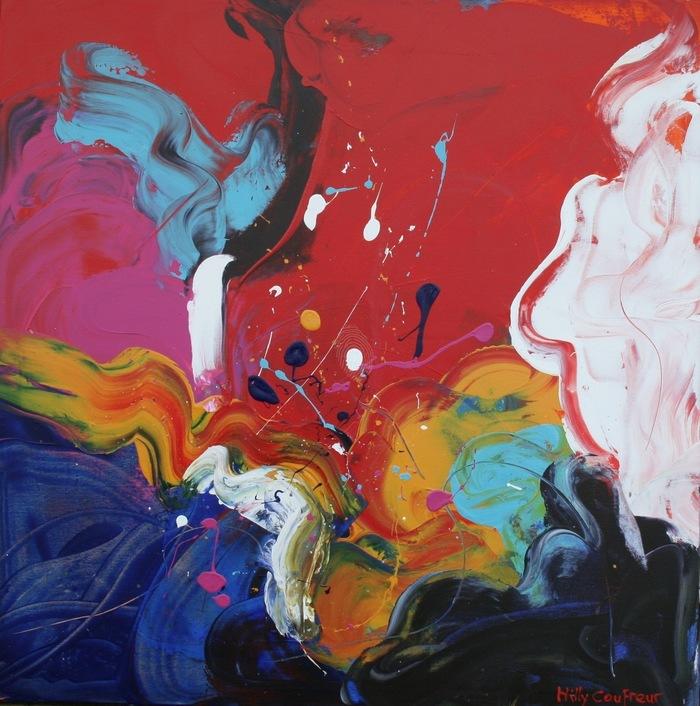 Pure abstract expressionism in Waves of Fortune #4 by Hilly Coufreur
Pure abstract expressionism in Waves of Fortune #4 by Hilly Coufreur

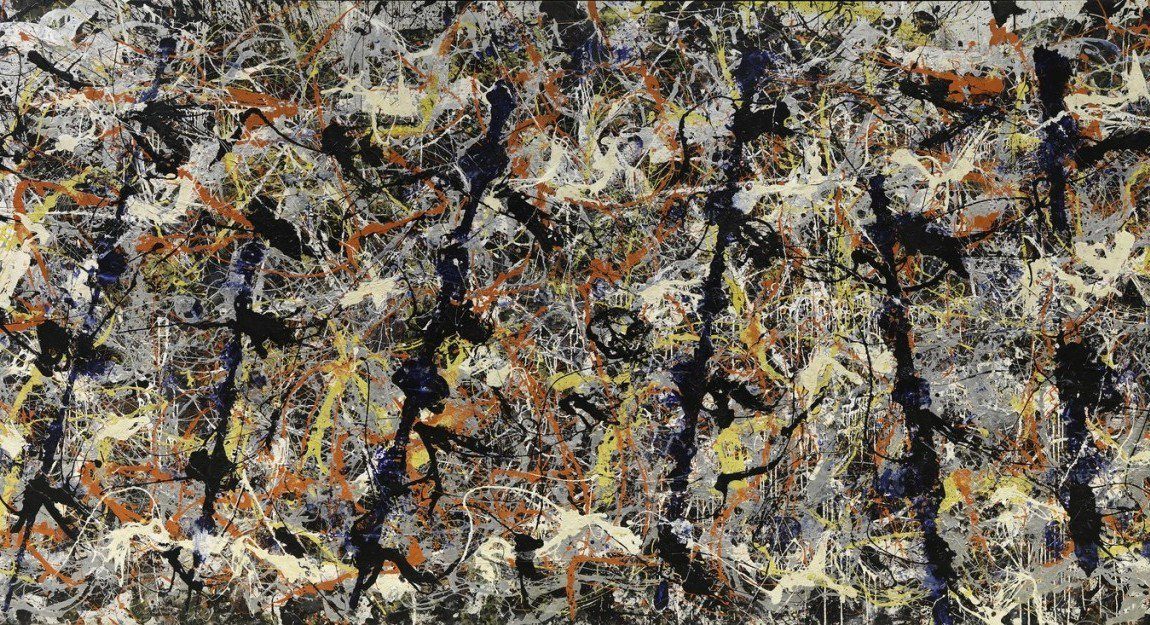
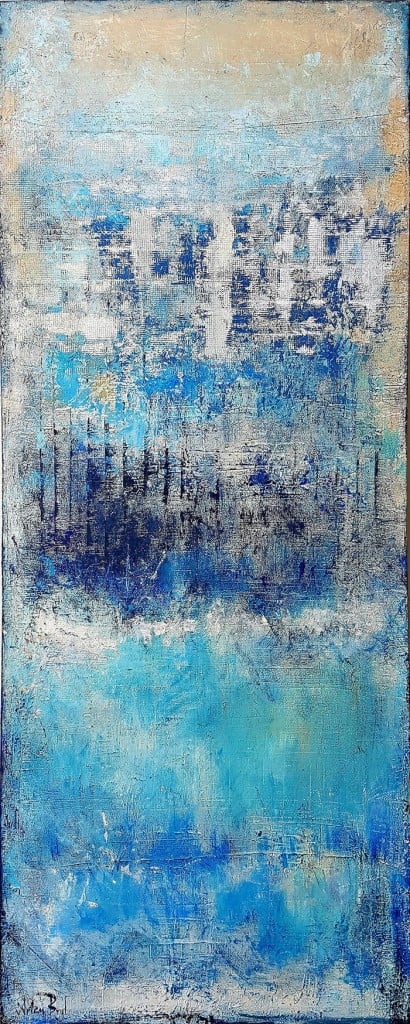
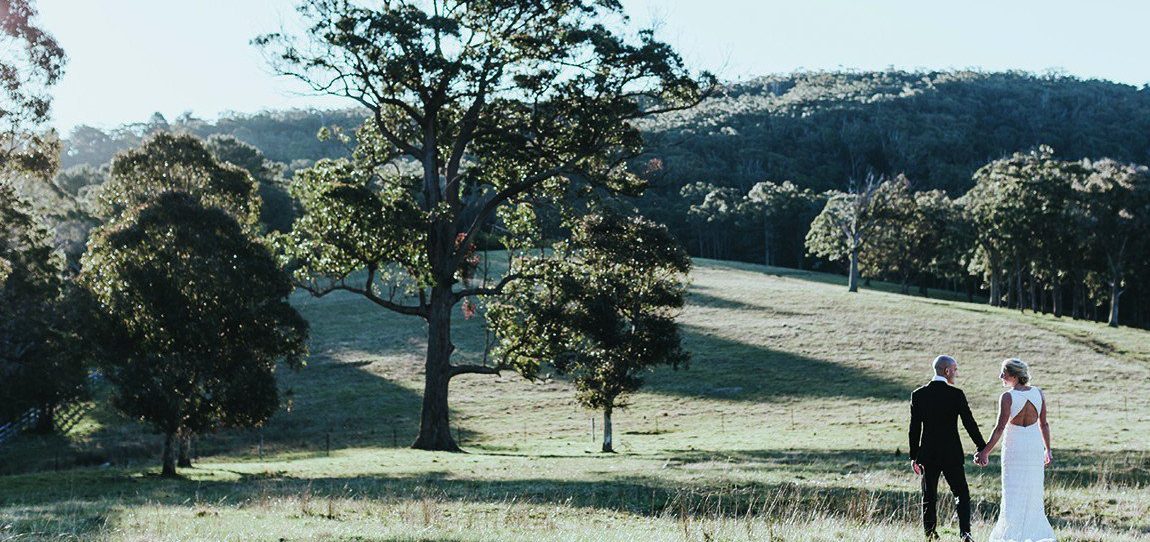
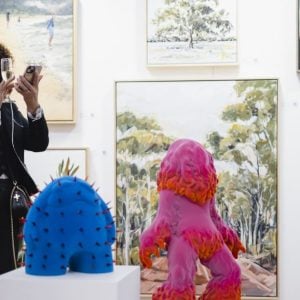
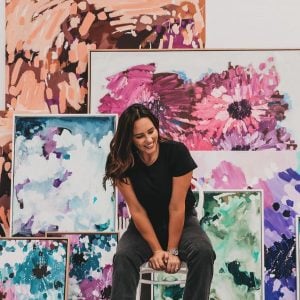

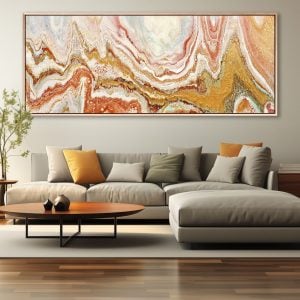








Thanks for sharing such an amazing article! It is a very knowledgeable and useful blog on Abstract painting.
[…] As you can see, defining what this art is can be subjective to who is attempting to define it and when in history this definition was attempted. Ultimately it is a visual language based upon emotion. […]